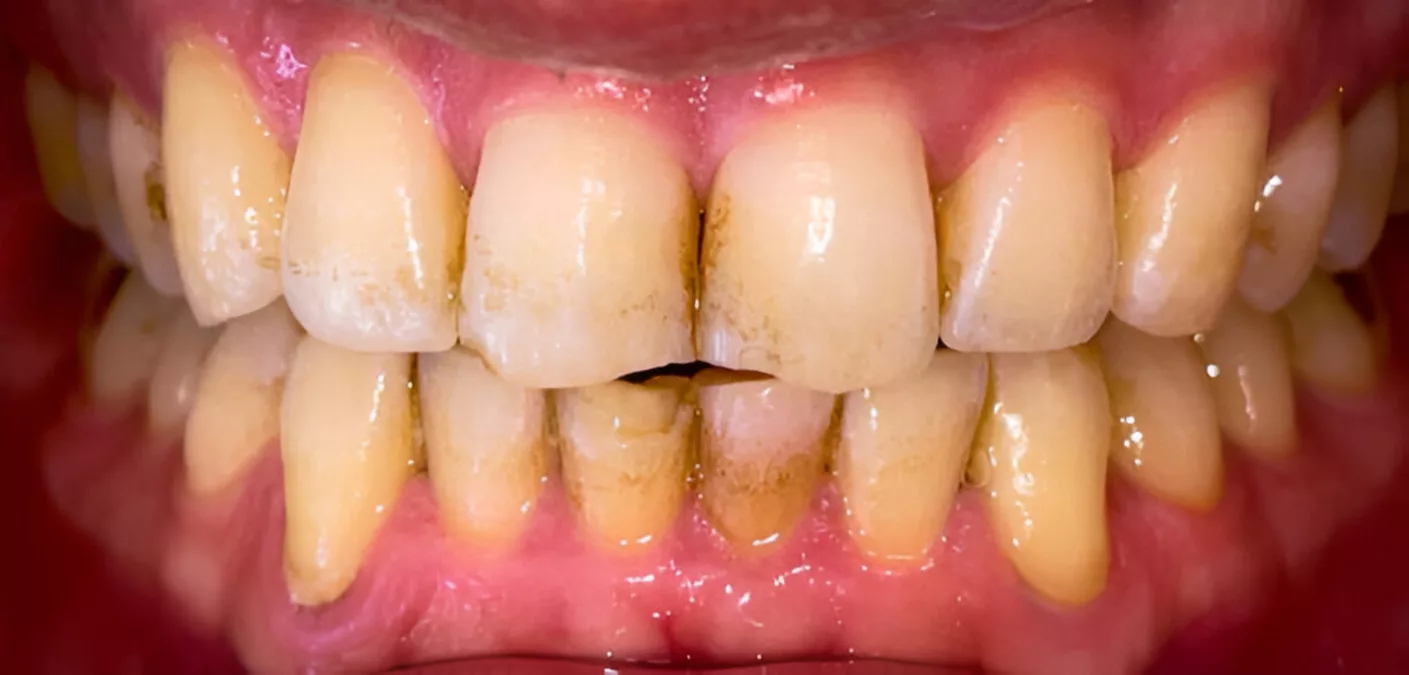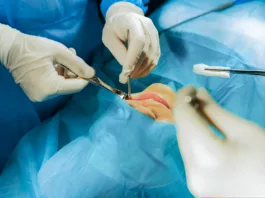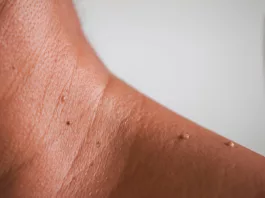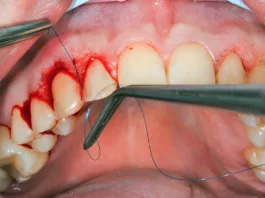Stained teeth refer to a dental condition in which the natural color of one or more teeth becomes altered, resulting in partial or complete discoloration. This condition can be as mild as barely noticeable during daily activities like smiling or speaking, or it can be severe enough to affect the overall facial appearance and expression of the patient.

Understanding Stained Teeth
Tooth discoloration, commonly referred to as stained teeth, is a condition characterized by abnormal changes in tooth shade that negatively impact appearance and aesthetics. It may affect one or several teeth and can result from a range of environmental or developmental factors. Stained teeth are a widespread issue that can affect individuals of any age or gender without a strong predilection for any particular group.1Hattab, F. N., Qudeimat, M. A., & al-Rimawi, H. S. (1999). Dental discoloration: an overview. Journal of Esthetic Dentistry, 11(6), 291–310. https://doi.org/10.1111/j.1708-8240.1999.tb00413.x
Normally, teeth exhibit a light-yellow hue, which varies with ethnicity, age, and lifestyle habits. However, when a tooth becomes stained, its color can change to dark yellow, reddish brown, light brown, black or white spots, or even light grey. Tooth discoloration affects the appearance of the patient because teeth that show during speaking and smiling play a role in facial aesthetics. Poor tooth shade or staining can make it harder for the patient to speak or smile with confidence.2Ibiyemi, O., & Taiwo, J. O. (2011). Psychosocial aspect of anterior tooth discoloration among adolescents in Igbo-ora, southwestern Nigeria. Annals of Ibadan postgraduate medicine, 9(2), 94–99.
Patients need to consult their dentist to restore the natural and aesthetic tooth color. If the cause of tooth discoloration is related to diet or oral hygiene, the problem can usually be treated with a simple dental procedure, followed by strict adherence to post-treatment care. However, when the cause is related to systemic disease or developmental anomalies, more complex interventions such as extra-coronal restorations or advanced aesthetic treatments may be necessary.3Jackson, B. A., & Taylor, C. D. (2019). Sudden Onset of Tooth Discoloration. The Journal of clinical and aesthetic dermatology, 12(10), 12–13.
Types of Tooth Staining
The type of staining depends on the causative agent responsible for the discoloration, and this also helps determine the appropriate treatment approach for stained teeth.
Extrinsic Tooth Staining:
This refers to discoloration that occurs on the enamel surface—the outermost layer of the tooth. When pigmentation enters the mouth through food, beverages, or habits like smoking, it adheres to the enamel and alters the normal shade of the teeth. Since the pigment remains on the outer surface, extrinsic stains can often be removed easily with whitening toothpaste or professional dental cleaning.
Intrinsic Tooth Staining:
Intrinsic staining develops when the discoloration penetrates beyond the enamel and settles within the deeper layer of the tooth, called the dentin. This can happen due to internal factors such as excessive fluoride intake during early tooth development (fluorosis), use of certain antibiotics like tetracycline in childhood, trauma to a developing tooth, or some genetic conditions that affect tooth structure. These stains are usually more resistant to basic treatments and often require advanced procedures like in-office bleaching or restorative options such as veneers or crowns to restore a natural tooth color.
Difference Between the Stained Tooth & Tooth Cavity
There are different colors of stains that appear on the tooth surface. However, sometimes a dark brown or black stain creates confusion in patients, who may mistakenly think it is a cavitated lesion. The key to distinguishing between a stained tooth and a tooth cavity lies in the location of the stain, the pain status of the tooth, and the condition of the tooth structure. A dentist can differentiate between the two using specific diagnostic tools and criteria:4Żyła, T., Kawala, B., Antoszewska-Smith, J., & Kawala, M. (2015). Black stain and dental caries: a review of the literature. BioMed research international, 2015, 469392. https://doi.org/10.1155/2015/469392
| Feature | Stained Teeth | Tooth Cavities |
|---|---|---|
| Cause | Caused by food, drinks, tobacco, medications, or poor oral hygiene. | Caused by tooth decay from bacteria breaking down the tooth structure. |
| Pain | Typically painless. | Cavities can cause pain, especially as they spread deeper to the pulp, leading to pulpitis. |
| Tooth Structure | No structural damage in cases of extrinsic stains; intrinsic stains may affect the dentin. | Damages the enamel and can spread deeper into the dentin and pulp, causing severe damage. |
| How Dentists Diagnose | Diagnosed through visual inspection or by assessing the staining pattern. | Diagnosed using X-rays, probing, or visual inspection to identify decay. |
| Treatment | Whitening treatments, professional cleaning, or cosmetic fixes like veneers. | Treated with fillings, crowns, or more complex procedures like root canal treatment, if the cavity spreads to the pulp. |
| Appearance | Discoloration on the tooth surface, with possible deeper staining affecting the dentin. | Visible holes or damage, with possible discoloration as the cavity progresses. |
| Spread of Damage | Staining typically remains on the surface. | Cavities can spread deeper into the tooth layers, affecting the pulp and potentially causing pulpitis. |
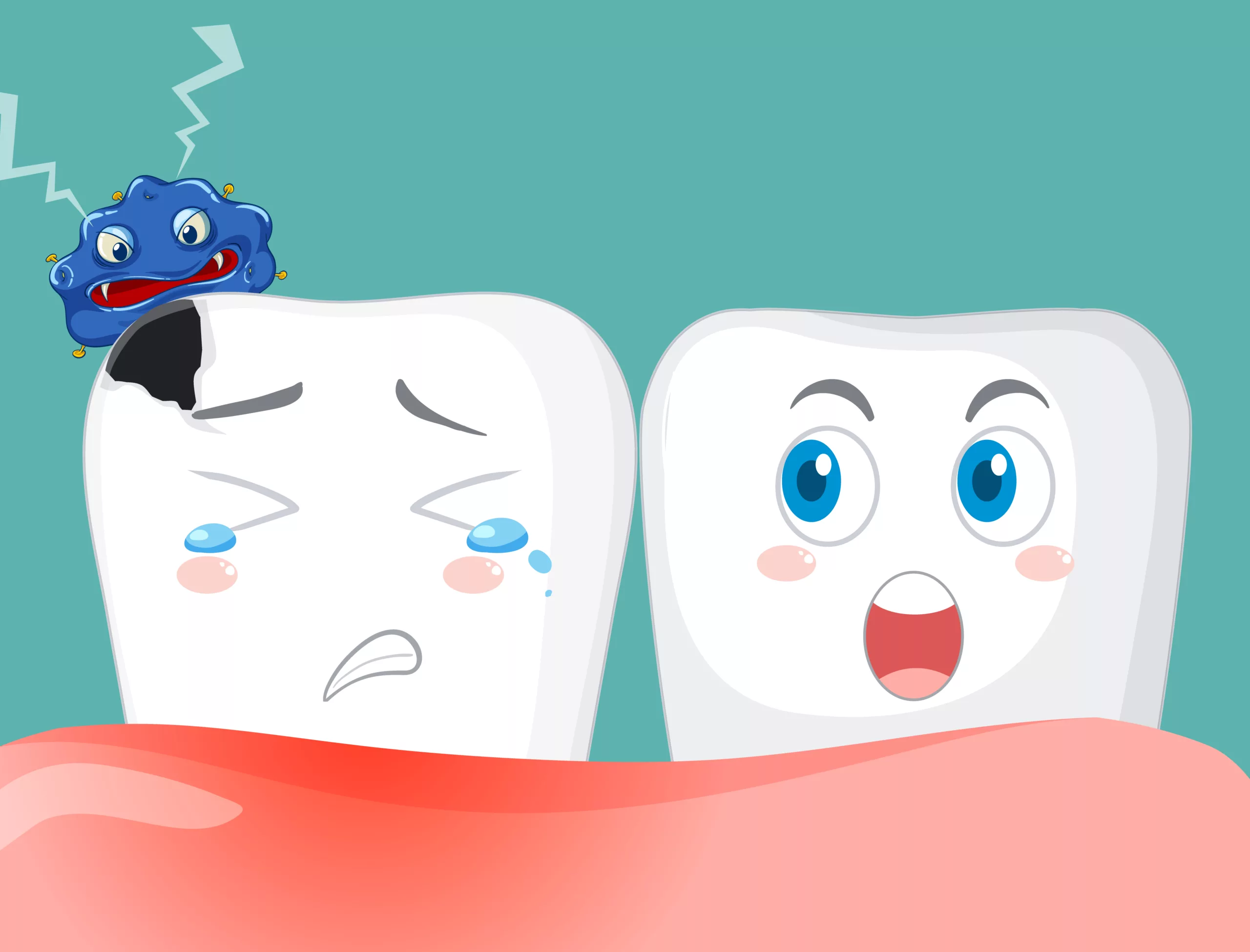
Causes of Tooth Staining
Tooth staining can be caused by various factors, which can either affect the surface of the teeth (extrinsic) or penetrate deeper layers (intrinsic). The causes of tooth discoloration are typically categorized into two types: extrinsic causes and intrinsic causes.
Extrinsic Causes of Tooth Staining
These are external factors that cause staining on the outer layer of the tooth (enamel). These stains can often be removed through regular brushing or professional cleaning.
Poor Oral Hygiene:
It is advisable to brush your teeth two times a day and do flossing once a day to remove all types of food debris, bacteria, and harmful products. However, failure to do so will cause tooth discoloration due to the presence of food particles and microbes.
Colored Food Products & Drinks:
Foods and beverages such as coffee, tea, red wine, berries, and curry can cause staining. The color particles from these foods can attach to the enamel and cause discoloration.
Smoking or Chewing Tobacco:
Nicotine and tar in tobacco cause stubborn extrinsic stains ranging from dark brown to almost black shades, especially on the inner surfaces of teeth.5Alkhatib, M. N., Holt, R. D., & Bedi, R. (2005). Smoking and tooth discoloration: findings from a national cross-sectional study. BMC Public Health, 5, 27. https://doi.org/10.1186/1471-2458-5-27
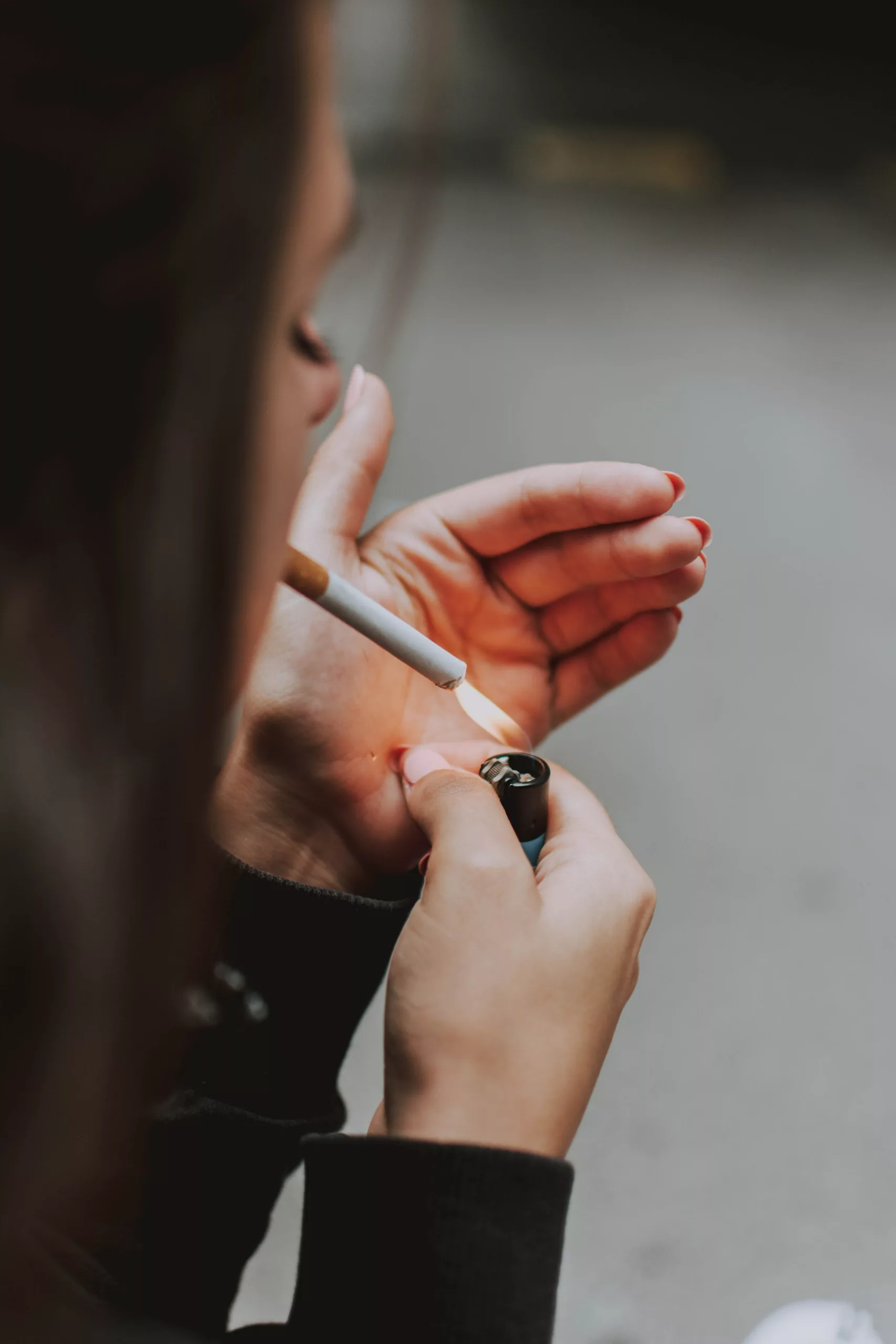
Drinking Caffeine:
Tea and coffee, both rich in caffeine and chromogens, can lead to yellow-brown staining if consumed excessively and not followed by proper cleaning.
Intrinsic Causes of Tooth Staining
These are deeper discolorations that occur within the inner layers of the tooth, such as dentin. They often result from systemic issues or chemical exposure and typically require advanced treatments like bleaching, veneers, or crowns.
Medication Use:
Certain drugs—especially tetracycline antibiotics taken during pregnancy or early childhood—can cause permanent tooth discoloration. Iron supplements and antihistamines may also cause intrinsic stains.6Wang, J., Zou, D., Li, Y., Liu, P., & Guo, C. (2023). Drug-induced tooth discoloration: An analysis of the US Food and Drug Administration Adverse Event Reporting System. Frontiers in Pharmacology, 14, 1161728. https://doi.org/10.3389/fphar.2023.1161728
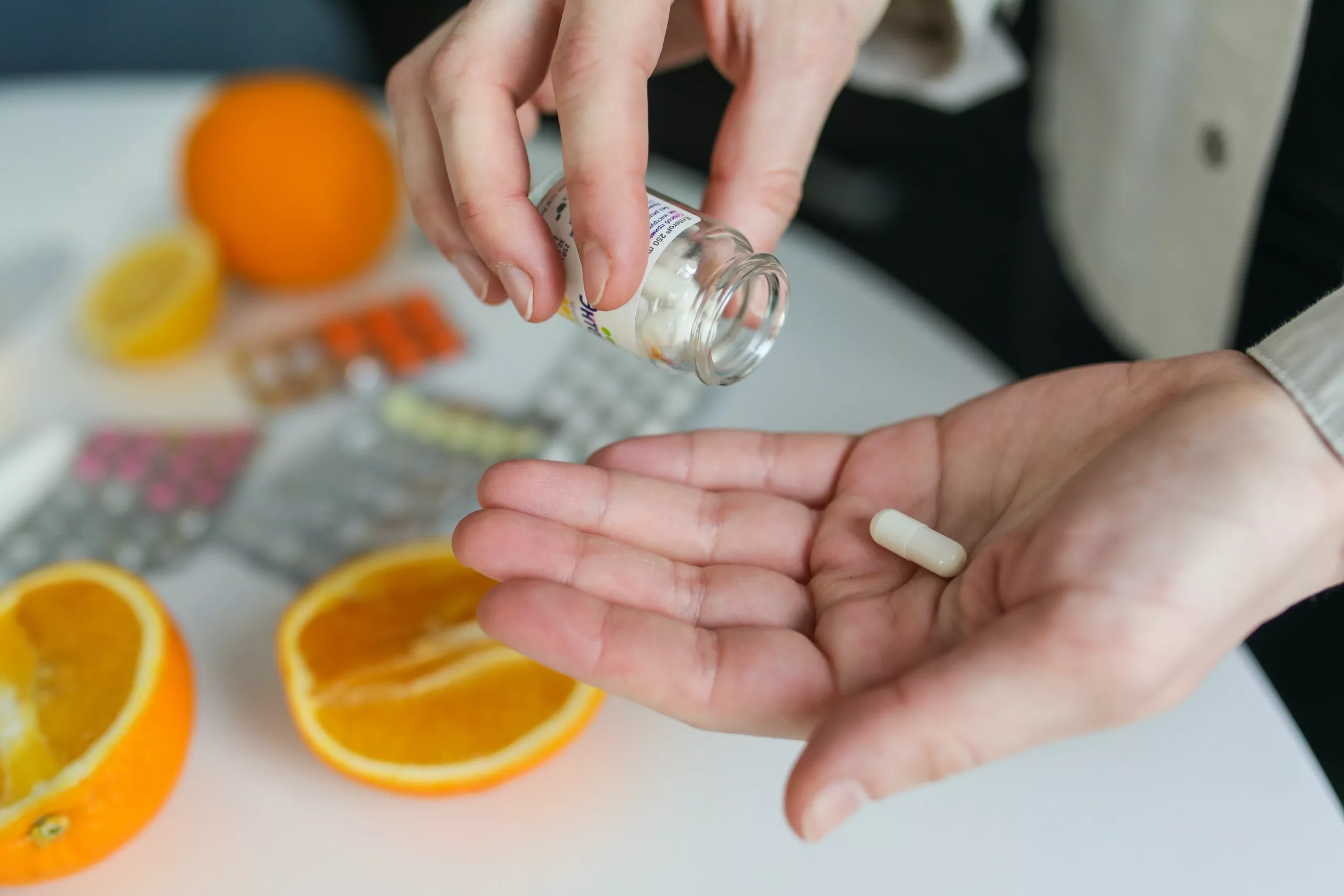
Systemic Illnesses:
Conditions such as dental fluorosis, erythropoietic protoporphyria, and hemophilia may affect tooth development and mineralization, leading to intrinsic staining. In many cases, even after treating the systemic illness, the stain remains and requires cosmetic dental intervention.
Dental Trauma:
Injury to a developing or fully developed tooth can cause internal bleeding in the pulp. This results in reddish or grayish stains due to blood pigment infiltration. In some cases, the pulp may die, leading to further discoloration of the tooth.
Abnormal Tooth Development:
Genetic disorders such as amelogenesis imperfecta or dentinogenesis imperfecta interfere with the normal formation of enamel or dentin. Teeth appear malformed and discolored, often yellow, brown, or bluish-gray.
Treatment Options for Stained Teeth
Treatment depends on the type and underlying cause of staining. Managing discoloration can involve a range of interventions—from basic oral hygiene enhancements to advanced cosmetic restorations. A dentist will assess your teeth and recommend the most appropriate option based on individual needs.
Dentifrices (Whitening Toothpaste)
For mild extrinsic stains caused by food, beverages, or tobacco, dentists may recommend whitening toothpaste. These dentifrices contain gentle abrasives, enzymes, or chemical agents like hydrogen peroxide or carbamide peroxide that help remove surface stains. However, they do not change the intrinsic color of the tooth and are best used as a preventive or maintenance measure following professional whitening.7Kahler B. (2022). Present status and future directions – Managing discolored teeth. International endodontic journal, 55 Suppl 4(Suppl 4), 922–950. https://doi.org/10.1111/iej.13711
Dental Cleaning (Scaling and Polishing)
When stains are more prominent or accompanied by plaque or tartar buildup, professional dental cleaning may be the first step. Scaling removes hardened deposits from the teeth while polishing smoothens the enamel surface and removes superficial stains. This procedure is effective for extrinsic stains and is often recommended every 6 months as part of routine dental care.
Teeth Whitening (Bleaching)
Bleaching is one of the most common and effective methods for treating both extrinsic and some forms of intrinsic discoloration. It works by breaking down stain molecules within the enamel and dentin. There are two commonly employed methods for bleaching:
-
In-Office Bleaching
This method uses a high-concentration bleaching agent (typically hydrogen peroxide) applied by a dental professional. A light or laser may be used to activate the active ingredient. In-office bleaching provides rapid results and is ideal for moderate to severe discoloration.
-
At-Home Bleaching (Dentist-Supervised)
This approach involves custom-fitted trays provided by a dentist, along with a lower-concentration bleaching gel (usually carbamide peroxide). Patients wear the trays for a few hours daily over 1–2 weeks. This method allows gradual whitening and is more cost-effective than in-office procedures, with the added benefit of being done at home under supervision.

Veneers
Dental veneers are thin porcelain or composite resin shells bonded to the front surface of the teeth. They are used when bleaching is ineffective, especially in cases of tetracycline staining, fluorosis, or developmental defects. Veneers offer a long-term cosmetic solution, masking discoloration while improving tooth shape and alignment.
Crowns
For teeth with severe intrinsic stains, structural damage, or previous restorations, full-coverage dental crowns may be recommended. Crowns encase the entire visible portion of the tooth and restore both function and appearance. They are commonly used when intrinsic staining is accompanied by enamel erosion, trauma, or large fillings that compromise tooth integrity. Ceramic or porcelain-fused-to-metal crowns are preferred for their aesthetic appeal and durability.8Matis, B. A., Wang, Y., Jiang, T., & Eckert, G. J. (2002). Extended at-home bleaching of tetracycline-stained teeth with different concentrations of carbamide peroxide. Quintessence international (Berlin, Germany : 1985), 33(9), 645–655.
Final Thoughts
Tooth discoloration affects both health and aesthetics. Identifying the type and cause of staining is key to determining the most effective treatment. While mild surface stains may respond to cleaning, deeper discoloration requires professional assessment and cosmetic correction to restore a healthy, confident smile.
Refrences
- 1Hattab, F. N., Qudeimat, M. A., & al-Rimawi, H. S. (1999). Dental discoloration: an overview. Journal of Esthetic Dentistry, 11(6), 291–310. https://doi.org/10.1111/j.1708-8240.1999.tb00413.x
- 2Ibiyemi, O., & Taiwo, J. O. (2011). Psychosocial aspect of anterior tooth discoloration among adolescents in Igbo-ora, southwestern Nigeria. Annals of Ibadan postgraduate medicine, 9(2), 94–99.
- 3Jackson, B. A., & Taylor, C. D. (2019). Sudden Onset of Tooth Discoloration. The Journal of clinical and aesthetic dermatology, 12(10), 12–13.
- 4Żyła, T., Kawala, B., Antoszewska-Smith, J., & Kawala, M. (2015). Black stain and dental caries: a review of the literature. BioMed research international, 2015, 469392. https://doi.org/10.1155/2015/469392
- 5Alkhatib, M. N., Holt, R. D., & Bedi, R. (2005). Smoking and tooth discoloration: findings from a national cross-sectional study. BMC Public Health, 5, 27. https://doi.org/10.1186/1471-2458-5-27
- 6Wang, J., Zou, D., Li, Y., Liu, P., & Guo, C. (2023). Drug-induced tooth discoloration: An analysis of the US Food and Drug Administration Adverse Event Reporting System. Frontiers in Pharmacology, 14, 1161728. https://doi.org/10.3389/fphar.2023.1161728
- 7Kahler B. (2022). Present status and future directions – Managing discolored teeth. International endodontic journal, 55 Suppl 4(Suppl 4), 922–950. https://doi.org/10.1111/iej.13711
- 8Matis, B. A., Wang, Y., Jiang, T., & Eckert, G. J. (2002). Extended at-home bleaching of tetracycline-stained teeth with different concentrations of carbamide peroxide. Quintessence international (Berlin, Germany : 1985), 33(9), 645–655.

